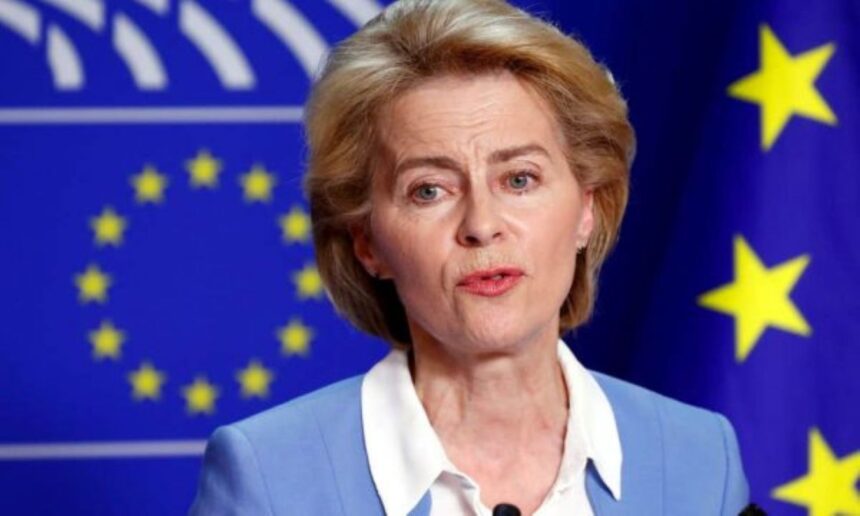With Washington’s abrupt decision to suspend military aid to Ukraine looming in the background, concerned European Union leaders will meet in Brussels on Thursday to discuss steps to strengthen the EU’s defense against Russia.
“The question is no longer whether Europe’s security is concretely threatened or whether Europe should take more responsibility for its own security. The question before us is whether Europe is prepared to act decisively—and whether it is ready and capable of acting with the necessary speed and ambition,” said European Commission President Ursula von der Leyen ahead of the meeting. She unveiled a multi-dimensional financial defense plan worth $870 billion for the 27-member bloc.
Such messages are echoing in multiple urgent meetings of European leaders, who fear a potential disengagement of the United States, pushing them toward a new commitment to increased defense spending. This shift follows years of U.S. calls for the EU to take greater responsibility for its own security.
Challenges and Internal Resistance
However, EU member states face deep challenges in rearming, from fragile governments and economies to skeptical populations and the rise of far-right parties, often with more favorable views toward Russia. A major concern is the potential withdrawal of a Trump-led U.S. administration from traditional transatlantic alliances.
“This poses serious challenges for the future of the European Union, and I think Europeans are very aware of that,” said Ian Lesser, head of the Brussels office of the German Marshall Fund.
The key question remains: Will Europe respond collectively to these challenges, whether in trade or defense, or will member states act individually?
For many EU leaders, the answer appears to be unity. During a meeting in London, EU states and the UK—no longer an EU member—agreed to draft their own Ukraine peace plan to present to Washington. France and Britain also backed a so-called “coalition of willing states” to deploy forces to Ukraine to guarantee the implementation of a potential peace agreement.
French President Emmanuel Macron, a longtime advocate for greater European military autonomy, has also suggested extending France’s nuclear deterrent to other European nations.
“European leaders are finally sensing the urgency, but at this moment, it is not enough,” said analyst Olena Prokopenko of the Marshall Fund.
Europe’s Defense Deficit
Beyond Ukraine, Brussels-based think tank Bruegel estimates that Europe needs 300,000 additional troops and hundreds of billions of dollars more to deter a potential Russian aggression without U.S. support.
“Europe lacks weapons, replacement parts, and readiness,” said French defense expert Elie Tenenbaum.
However, former French Ambassador Michel Duclos emphasized Europe’s strengths. “We are not in a good position, but in demographic and economic terms, we (Europe) can be much stronger than Russia if we are able to unify our defense efforts,” he said.
Political and Public Pushback
Europe’s new security ambitions are already facing internal resistance. In France, far-right leader Marine Le Pen dismissed the idea of including Europe under France’s nuclear umbrella and called plans for independent EU defense an “illusion.”
Hungarian Prime Minister Viktor Orban, known for his friendly ties with the Kremlin, has urged Europe to enter direct negotiations to secure a ceasefire between Ukraine and Russia.
Public support for Ukraine is also waning in some European countries, with economic challenges mounting. Recent polls show that while two-thirds of French citizens believe Europe should continue to support Kyiv, three-quarters oppose deploying troops—except to enforce a possible peace deal.
“So far, European leaders have tried to reassure rather than alarm their citizens,” said Tenenbaum. “But if they want to justify higher defense spending and increased risk-taking, they will need to be much more vocal about the threats the region faces.”







